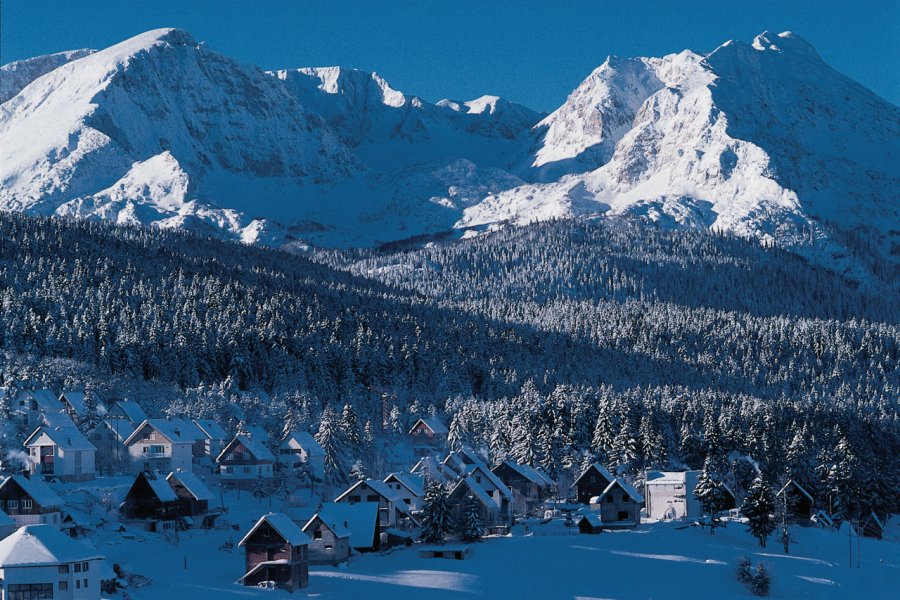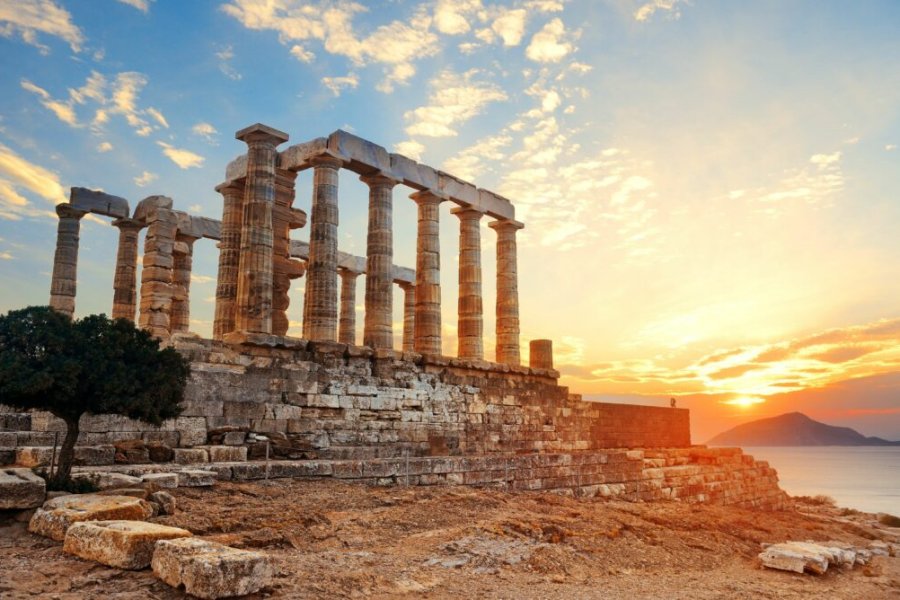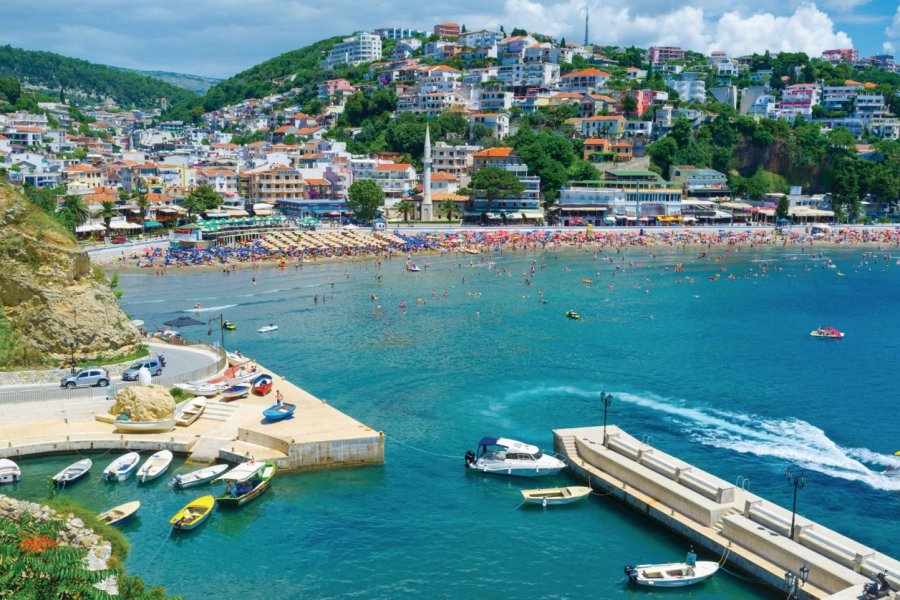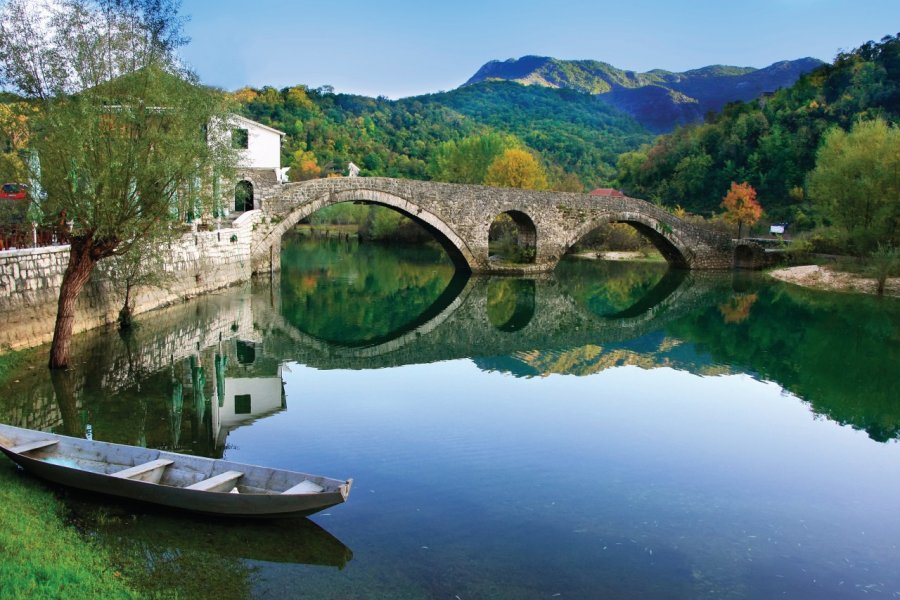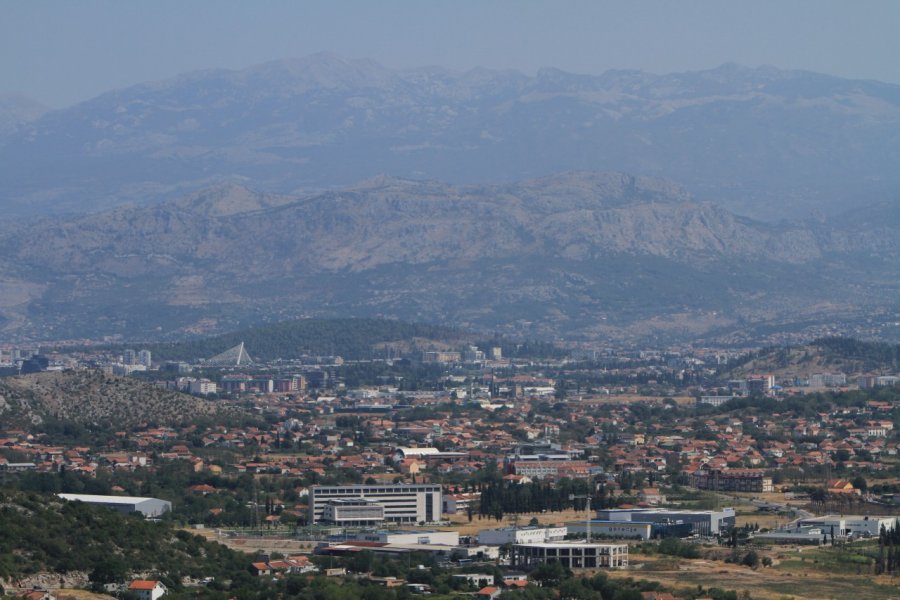Travel guide Montenegro
Small country of the Balkans, Montenegro is separated from Serbia since 2006. It offers the same assets as neighboring Croatia, while being less touristy: lively seaside resorts on the shores of the Adriatic Sea, mountains for hiking and a rich heritage. Leaving the coast, we reach an environment of forest and mountain. And it is an immersion in the greenery which one enjoys particularly by visiting the natural parks of Skadar and Lovcen. The destination offers a particularly rich religious heritage. One should not miss the numerous churches and monasteries, including the Serbian Orthodox monastery of Ostrog embedded in its cliff, a very popular place of pilgrimage. Another jewel of Montenegro, close to Croatia: the medieval fortified city of Kotor and its bay, among the most beautiful bays in the world. This deep bay goes inland, surrounded by high reliefs, dotted with small islands, with villages and chapels, composing a beautiful landscape. Another tourist spot: Budva, its medieval center and its long beaches. The visit of Podgorica, the capital, is a must if you come by plane. More rich in heritage, the former royal capital, Cetinje, is full of historical monuments, monasteries and museums. See also Perast, a lovely village listed as a world heritage site and further south on the coast, the port of Bar, also a seaside resort. In your plate? Dried meat, sausages and the local specialty... the kid stuffed with chicken.
What to see, what to do Montenegro?
-
Book an activity
-
Customized travel
- The most beautiful cities Montenegro
When to go Montenegro ?
It all depends on which part of the country you want to visit. If you want to limit your stay to the Montenegrin coast, any time of the year is good. However, it is important to note that many hotels close in winter - so the choice is more limited during this time of the year. Also, it should be noted that the majority of the establishments on the coast have different prices depending on the month of the year. Prices go up during July and August. To enjoy both the beach and slightly lower prices, it is therefore advisable to stay in June or September. Travelers wishing to explore the entire country and especially those planning to hike in the northern mountains should choose June, July, August and September. Temperatures can drop very quickly in this part of the country and it is not uncommon for towns such as Kolašin or Žabljak to flirt with 0°C by the beginning of October. In the northern mountainous areas of the country, the snow sometimes lasts until the end of June and starts to fall at the beginning of October. Hikers who are not equipped with the proper equipment should choose the months of July and August to explore the mountains of Montenegro. For winter sports enthusiasts, the season runs from December to April. In the south of the country (Adriatic coast), the climate remains pleasant in summer thanks to the influence of the sea, even if the temperatures sometimes reach 38°C. Spring and autumn are the best times to visit this region. Note: the capital and its surroundings are stiflingly hot in summer, while Cetinje remains very pleasant (20°C on average, in summer).
Suggested addresses Montenegro
Travel Montenegro
-
Find a hotel
-
Car Rental
-
International e-SIM package
-
Find a local agency
Bien que de dimensions modestes, le Monténégro nécessite dix jours de voyage pour en faire le tour complet. Cette perle des Balkans offre à la fois la possibilité de se baigner dans les eaux cristallines de la mer Adriatique, mais aussi de dévaler leurs pentes enneigées l’hiver. Nature luxuriante, patrimoine impressionnant, excursions entre villages ethno et monastères orthodoxes… préparez vos baskets pour arpentez les plages et montagnes du Monténégro !
Find unique holiday offers with our partners
How to go Montenegro
How to go alone
You can land in Montenegro at the airport of Tivat or Podgorica. You can also reach the country by boat from Italy, departures take place every day from Bari and Ancona to Bar (about 8 hours crossing). By train from Belgrade, also 8 hours. On the spot, there is no difficulty in finding accommodation: hotels, campsites, youth hostels, homestays, apartment rentals.
How to go on a tour
You will find numerous and varied proposals from tourism professionals, most often quite affordable. All of them include a visit to the capital. Stays with hikes are particularly well designed. Regular promotions on seaside stays in mid-season. Local travel agencies offer excursions to neighboring countries: Croatia, Albania, Macedonia, Bosnia-Herzegovina, Serbia, Italy...
How to get around
You have a choice of transportation. You can travel from one end of the country to the other by rented cabs, rented cars, buses, the maritime network or by train. There are regular trains between Subotica, Novi Sad and Belgrade. The train passes through Bijelo Polje, Kolasin, Podgorica and ends in Bar, Montenegro's main port. Night trains with sleeping cars are convenient. You must reserve your berth in advance.
Featured articles Montenegro
Discover Montenegro
To discover Montenegro is to encounter a well-made nature: a mild climate and a diversified geography, a magnificent Adriatic coastline, breathtaking mountains, lakes, but also immense parks, including the famous Durmitor National Park, classified as a Unesco World Heritage Site. A small country with a complex history, it was coveted for a long time by the Turks (three centuries of Ottoman domination) and then fought to gain its independence recently. This young nation is trying to take its place on the European scene. Its Slavic identity preserved, the country remains attached to the Orthodox religion with its many monasteries, of which the most famous is that of Ostrog, a high place of pilgrimage. This people is attached to its craft and gastronomic traditions as much as to its typical Balkan folk music, which it does not hesitate to share with its visitors.
Pictures and images Montenegro
The 12 keywords Montenegro
1. #Home
A little shy, but anxious not to "disturb" the visitor, the Montenegrin is generally welcoming. Be careful not to be naive and accept the basket of bread that is generously offered to you. Once refused, the host will insist on leaving it on the table. Of course, you will have to pay for the basket at the end, even if it is not consumed.
2. #Kotor Mouths
This magnificent fjord, the jewel of the Adriatic, is the pride of the country. It is 30 km long and lined with dozens of churches and beautiful villas, bearing witness to the rich maritime past and the Venetian presence. Listed as a World Heritage Site by UNESCO since 1979, the mouths of Kotor are considered to be one of the ten most beautiful bays in the world.
3. #Turkish Coffee

It is a true ritual of the country and is served in traditional cafés(kafana) and families. It is prepared using a copper pot called a džezva. The water is brought to a boil, the coffee is mixed and poured into small cups. It can be accompanied by ratluk (Turkish delight) and a glass of water. All you have to do is enjoy it!
4. #Corzo
The Corzo is the Balkan equivalent of the Promenade des Anglais. As soon as the weather is fine, Montenegrins crowd the main artery of each town, strolling along in the late afternoon until the evening. The time when girls walked on one side of the street and boys on the other is well and truly over!
5. #Ethnotourism

Recently, a more rural tourism is developing in the heart of Montenegrin villages. Cottages built at the foot of the mountains near a river allow you to enjoy nature to the full. The food is organic, the fish caught in the vicinity, in the greatest ecological concern. In short, these ethnovillages offer a total disconnection.
6. Adriatic Sea
From Budva to Sveti Stefan, passing by Bar or Herceg Novi, Montenegrins are also fond of their own beaches! On weekends, especially on Saturdays, you will see locals flocking to the beach, whether with family or friends. Never tiring of the beauty of their coastline, the atmosphere is conducive to meeting and bonding.
7. #Orthodoxy

Very religious, Montenegrins remain attached to the Orthodox Christian values of the country and can boast of having about twenty ancient monasteries. Sunday morning church liturgies are crowded and the Slava, a festival that celebrates the family's patron saint once a year, is passed down from father to son.
8. #Pljeskavica, čevapi
A true local "hamburger" imported from the Ottomans, pljeskavica is within the reach of all pockets. Composed of minced meat in the form of a burger or small rolls for the čevapi. Sold on every street corner, they are eaten at any time of day with salad and fries. Beware, very oily meal.
9. #Rakija

A must for all visitors to the house as well as to the café. The Montenegrin, proud of his beverage, will certainly offer a tasting of his rakija. Served in small glasses, it is a strong alcohol, a brandy (based on fruit). There are sweetened variants. An elixir of joy, a real social link here!
10. #Skiing
Montenegro is a mountainous fortress. Having served as a resistance during invasions, today these new ski resorts are very popular. They offer more and more activities (snowboarding, downhill skiing, cross-country skiing), but also festivities with huge parties organized at the foot of the mountains in a very warm atmosphere.
11. #Trafika
Small shops, in the shape of a small house, that you will find in the whole country. The opening hours are wide: some of them even go up to 7 days a week and 24 hours a day. You can find cigarettes, newspapers, cakes, drinks and sweets at slightly higher prices than in a supermarket. If you are looking for information, they are also very good advice points.
12. #Water-polo
It is the sport par excellence in Montenegro! Very popular, the competitions are broadcasted and followed in the cafes. The smallest country in Europe has more than a dozen medals to its credit. The national team, the pride of the country, is nicknamed "the Montenegrin sharks"(Crnogorske ajkule) by the public and the media of Montenegro.
You are from here, if...
You take your time to start the morning, over a coffee, reading your newspaper to follow the news. Montenegrins are known for not being in a hurry... except when driving.
You produce your own alcohol or buy directly from local producers.
You are a gambler and play cards with friends with real stakes (money, bottles, meals, etc.).
You avoid talking about politics. Montenegrins are very patriotic and like to criticize their country, but will be offended if foreigners do so. Talk about nature, family, parties, but avoid politics, as the situation in the country is complex.
You spend your money. The relationship to money is different from the rest of Europeans, and talking about it is almost impolite. Everything has to be spent and nothing has to stay in the bank. If the average salary is 500 € per month, the important thing is to enjoy a good meal with friends, to treat your loved ones, without regrets!

